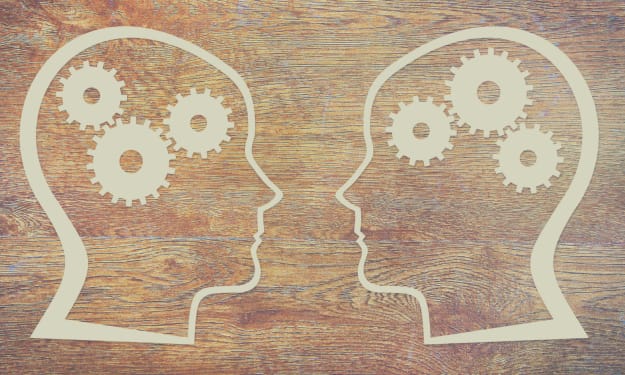An Introduction to Transpersonal Therapy
The practice of spiritual psychology for personal evolution.

If you'd like to listen to the audio narration of this article, it's available here.
Transpersonal therapy focuses on our individual evolution as humans beyond the realm of who we believe we are. It integrates the spiritual aspects of existence and proposes that a human life can traverse through three general stages of increasing consciousness — the prepersonal, the personal, and the transpersonal.
The Stages of Increasing Consciousness
In the prepersonal stage, we are largely fused with and dependent on those around us. We do not yet see ourselves as a separate person with a unique identity and individual consciousness. This stage is commonly associated with childhood, but some adults can exist here as well.
In the personal stage, we begin to define ourselves as a separate person and develop a story about who believe we are in the world. This narrative about who we believe we are includes the roles, self-concepts, and self-identifications that we have accumulated throughout life from our experiences in the world. Everything that comes up for you when you fill in the blank in “I am ___.” lies within the personal realm of existence.
In the transpersonal realm, we begin to transcend our personal identity. This does not mean we reject it altogether, but rather we access something deeper and more enduring — the timeless core of consciousness that courses through all life forms. Our personal identity then starts to become a smaller part of our experience. We can still access our personal identity when needed or useful, but we are no longer completely defined by it or run by it.
This deeper part of our existence — the transpersonal part — is also the part that exists in all living organisms and processes, so as we begin to access it more within ourselves, we begin to feel more interconnected with everyone and everything. In simple terms, our personal identity is what makes us separate individuals, and our timeless core is what makes us all one.
How This Applies in Therapy
Traditional therapy from a Western lens tends to work with individuals on overcoming the symptoms often associated with suffering — such as depression or anxiety — in either the prepersonal or personal realms. It also supports people in transitioning into or becoming more integrated in the personal realm. It does so by helping them learn to set boundaries, become a separate self from the people they feel dependent on or defined by, and — in general — become a functioning adult with a healthy, integrated sense of identity.
Transpersonal therapy, on the other hand, focuses more on helping people transition into or become more integrated in the transpersonal realm. It prioritizes getting to know ourselves more deeply over managing illness, accepting where we presently are over changing ourselves, and letting go of our attachment to our identity over cultivating a healthy one. It does so by creating an environment where people can cultivate and deepen a connection to that timeless core within themselves we spoke of before.
Thus, this type of therapy tends to be ideal for people in later stages of maturity who have already done the hard work of becoming integrated in the personal realm. This means they have developed a strong sense of a separate self and a healthy identity in the world, and are looking for a connection to something deeper within themselves.
Transpersonal therapy is a much more inward journey. It encourages allowing and being with what comes up naturally in the present moment, without having to make sense of it or do anything about it. It fosters a shift from striving to being; from pushing for change to surrendering to the process; from the illusion of control to humbling ourselves to the more powerful unfolding processes of evolving life systems and allowing them to run their course and do their work on us.
This article was intended to be an introduction to transpersonal therapy. We’ll dive deeper into the subject in the remaining parts of this series.






Comments
There are no comments for this story
Be the first to respond and start the conversation.